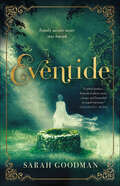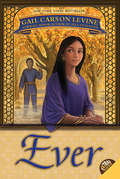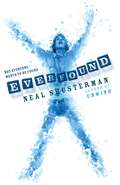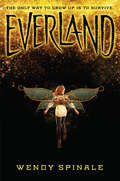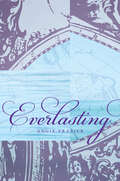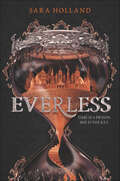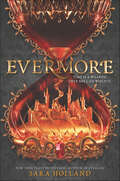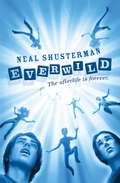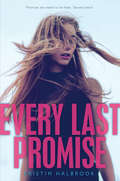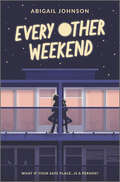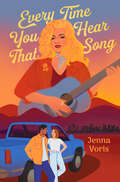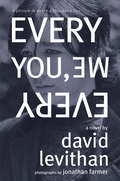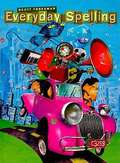- Table View
- List View
Eventide
by Sarah GoodmanEventide is an evocative YA historical fantasy thriller by debut author Sarah Goodman, for fans of Jennifer Donnelly and Libba Bray.A BEA YA Buzz PickA SIBA Fall Okra PickA Once Upon a Book Club Subscription Box SelectionMADNESS, SECRETS, AND LIESWheeler, Arkansas, 1907When their father descends into madness after the death of their mother, Verity Pruitt and her little sister Lilah find themselves on an orphan train to rural Arkansas.In Wheeler, eleven-year-old Lilah is quickly adopted, but seventeen-year-old Verity is not. Desperate to stay close to her sister, Verity indentures herself as a farmhand. But even charming farm boy Abel Atchley can’t completely distract her from the sense that something is not quite right in this little town. Strange local superstitions abound, especially about the eerie old well at the center of the forest. The woods play tricks, unleashing heavy fog and bone-chilling cold…and sometimes visions of things that aren’t there. But for Verity, perhaps most unsettling of all is the revelation that her own parents have a scandalous history in this very town. And as she tries to unearth the past, sinister secrets come with it—secrets that someone will go to violent lengths to protect….A haunting tale of long-buried secrets, small-town scandal, and single-minded vengeance by talented debut novelist Sarah Goodman.At the Publisher's request, this title is being sold without Digital Rights Management Software (DRM) applied.
Ever
by Gail Carson LevineFalling in love is easy . . . . . . for Kezi, a beautiful mortal, dancer, and rug weaver, and for Olus, Akkan god of the winds. Their love brings Kezi the strength to fight her fate, and it gives Olus the strength to confront his fears. Together—and apart—they encounter spiders with webs of iron, the cruel lord of the land of the dead, the mysterious god of destiny, and the tests of the Akkan gods. If they succeed, they will be together; but if they fail, Olus will have to endure the ultimate loss, and Kezi will have to make the supreme sacrifice. Newbery Honor author Gail Carson Levine has created a stunning world of flawed gods, unbreakable vows, and ancient omens. Her story of love, fate, and belief is spellbinding.
Ever-Changing Moon: Science Techbook (Science Techbook)
by Discovery EducationNIMAC-sourced textbook
Everfound (Skinjacker #3)
by Neal ShustermanWhile Mary lies in a glass coffin aboard a ghost train heading west, her minions are awaiting her re-awakening by bringing lots of new souls into Everlost to serve her. Meanwhile, Jackin' Jill has met Jix, a furjacker--a skinjacker who can take over the bodies of animals, most notably jaguars. Jix serves a Mayan god who collects Everlost coins and has his own agenda. In the concluding volume of The Skinjacker Trilogy, Neal Shusterman reveals new sides of the characters of Everlost, who are pitted against each other in a battle that may destroy all life on Earth.
Everland: A Prequel Novella To Everland (Everland #1)
by Wendy SpinaleForget the story of Peter Pan and Wendy you know. Because in Everland, the only way to grow up is to survive.London has been destroyed in a blitz of bombs and disease. The only ones who have survived are children, among them Gwen Darling and her siblings, Joanna and Mikey. They spend their nights scavenging and their days avoiding the ruthless Marauders -- the German Army led by Captain Hanz Otto Oswald Kretschmer. Unsure if the virus has spread past England's borders but desperate to leave, Captain Hook hunts for a cure, which he thinks can be found in one of the survivors. He and his Marauders stalk the streets snatching children for experimentation. None ever return. Until the day they grab Joanna. As Gwen sets out to save her, she meets a daredevil boy named Pete. Pete offers the assistance of his gang of Lost Boys and the fierce sharpshooter Bella, who have all been living in a city hidden underground. But in a place where help has a steep price and every promise is bound by blood, it will cost Gwen. And are she, Pete, the Lost Boys, and Bella enough to outsmart Captain Hook?
Everlasting
by Angie FrazierTHE LUXE meets A GREAT AND TERRIBLE BEAUTY meets INDIANA JONES.Sailing aboard her father's ship is all seventeen-year-old Camille Rowen has ever wanted. But as a lady in 1855 San Francisco, her future is set: marry a man she doesn't love in order to preseve her social standing. On her last voyage before the wedding, Camille learns the mother she has always believed dead is in fact alive and in Australia. When their Sydney-bound ship goes down in a gale, and her father dies, Camille sets out to find her mother and a map in her possession - a map believed to lead to a stone that once belonged to the legendary civilization of the (cont'd)
Everless (Everless #1)
by Sara HollandNew York Times bestseller!"Sara Holland is a fierce storyteller. Everless gives new and terrifying meaning to the phrase running out of time." —Stephanie Garber, New York Times bestselling author of CaravalIn the kingdom of Sempera, time is currency—extracted from blood, bound to iron, and consumed to add time to one’s own lifespan. The rich aristocracy, like the Gerlings, tax the poor to the hilt, extending their own lives by centuries. No one resents the Gerlings more than Jules Ember. A decade ago, she and her father were servants at Everless, the Gerlings’ palatial estate, until a fateful accident forced them to flee in the dead of night. When Jules discovers that her father is dying, she knows that she must return to Everless to earn more time for him before she loses him forever.But going back to Everless brings more danger—and temptation—than Jules could have ever imagined. Soon she’s caught in a tangle of violent secrets and finds her heart torn between two people she thought she’d never see again. Her decisions have the power to change her fate—and the fate of time itself. Fans of Victoria Aveyard, Kendare Blake, and Stephanie Garber will devour this lush novel's breathtaking action, incredible romance, and dangerous secrets. Plus don't miss the thrilling sequel, Evermore!
Evermore (Everless #2)
by Sara HollandThe New York Times bestselling series!Jules Ember confronts the girl who is both her oldest friend and greatest enemy in the highly anticipated sequel to Everless, praised by New York Times bestelling author Stephanie Garber as “an intoxicating blend of blood, secrets, and haunting mythology.” Jules Ember was raised hearing legends of the ancient magic of the wicked Alchemist and the good Sorceress. But she has just learned the truth: She is the Alchemist, and Caro—a woman who single-handedly murdered the Queen and Jules’s first love, Roan, in cold blood—is the Sorceress.The whole kingdom believes that Jules is responsible for the murders, and a hefty bounty has been placed on her head. And Caro is intent on destroying Jules, who stole her heart twelve lifetimes ago. Now Jules must piece together the stories of her past lives to save the person who has captured her heart in this one.Perfect for fans of Victoria Aveyard, Kiera Cass, and Kendare Blake, Evermore is the high-stakes, star-crossed follow up to the New York Times bestselling Everless that fans have been waiting for.
Evertaster: Course of Legends
by Adam Glendon Sidwell"Wonderfully talented writing; funny. " -- Orson Scott Card, NYT Bestselling Author of Ender's Game. When eleven-year-old Guster Johnsonville rejects his mother's casserole for the umpteenth time, she takes him into the city of New Orleans to find him something to eat. There, in a dark, abandoned corner of the city they meet a dying pastry maker. In his last breath he entrusts them with a secret: an ancient recipe that makes the most delicious taste the world will ever know - a taste that will change the fate of humanity forever. Forced to flee by a cult of murderous chefs, the Johnsonvilles embark on a perilous journey to ancient ruins, faraway jungles and forgotten caves. Along the way they discover the truth: Guster is an Evertaster - a kid so picky that nothing but the legendary taste itself will save him from starvation. With the sinister chefs hot on Guster's heels and the chefs' reign of terror spreading, Guster and his family must find the legendary taste before it's too late.
Everwild (Skinjacker #2)
by Neal ShustermanThere was the rumor of a beautiful sky witch, who soared across the heavens in a great silver balloon. And there were whispers of a terrible ogre made entirely of chocolate, who lured unsuspecting souls with that rich promising smell, only to cast them down a bottomless pit from which there was no return. Everlost, the limbo land of dead children, is at war. Nick the "Chocolate Ogre" wants to help the children of Everlost reach the light at the end of the tunnel. Mary Hightower, self-proclaimed queen of lost children and dangerous fanatic, is determined to keep Everlost's children trapped within its limbo for all eternity. Traveling in the memory of the Hindenburg, Mary is spreading her propaganda and attracting Afterlights to her cause at a frightening speed. Meanwhile, Allie the Outcast travels home to seek out her parents, along with Mikey, who was once the terrifying monster the McGill. Allie is tempted by the seductive thrill of skinjacking the living, until she learns a shocking secret: Those who skinjack are not actually dead. Critically acclaimed author Neal Shusterman writes a book about life, death, and how the choices we make define ourselves in this luminous sequel to Everlost, which Orson Scott Card called "marvelously inventive...and magically beautiful."
Everworld
by Rebecca PhelpsThe final installment of the Down World series sees Marina face old demons while also jumping into the future to a world that was changed by her very hand. For fans of Netflix&’s Dark and the Dark Stars series by Danielle Rollins.After a very complicated senior year, Marina O&’connell has relocated to Boston where she is attending her dream university. She has moved in with her brother Robbie and his fiance Piper and is trying to get over the heartbreak Adam caused, leaving her without a trace. While Marina tries to put herself out there and meet new people, she still cannot help the pull of the events that happened last year and the doors she left behind at East Township High.But the night before Robbie&’s wedding, Marina finds Adam sitting on her aunt&’s front porch. He claims he&’s been away teaching and apologizes for disappearing. Marina, still in love with him, takes him back. But as the two continue where they left off, no one but Marina seems to trust Adam.Then one night, another door to the Down World is found and Marina is once again sucked into the chaos of the portals. This time, she finds herself in the future, in the year 2063, and is astonished to find what her actions have caused in this utopian plane. While the future seems bright, dark secrets slowly begin to surface and people lost to time begin to appear. Marina will have to decide what she is willing to sacrifice in order to get her life back.
Every Crooked Pot: A novel
by Renée RosenIn her heart, Nina Goldman knows that beauty is only skin deep. But as a teenager growing up in Akron, Ohio – with her larger-than-life father Artie, a colorblind carpet salesman and frustrated musician – the only thing Nina wishes for is…to be beautiful. Or at least normal. As if having such an eccentric dad wasn't enough, Nina has another issue to face: the mirror. Born with a strawberry birthmark over her eye, Nina spends countless hours applying makeup and trying out ridiculous hairstyles designed to hide her eye. Convinced that her birthmark is the only reason she's not popular and can't find a boyfriend, Nina must find other ways to survive high school. Renee Rosen's Every Crooked Pot will send Nina on a string of crazy exploits that have her riding in dryers and appearing on TV. Through it all, Nina proves she'll do just about anything to fit in, and even more in the hope of finding love.
Every Falling Star: The True Story of How I Survived and Escaped North Korea
by Sungju Lee Susan Elizabeth McClellandWritten for a young audience, this intense memoir explores the harsh realities of life on the streets in contemporary North Korea.Every Falling Star is the memoir of Sungju Lee, who at the age of twelve was forced to live on the streets of North Korea and fend for himself. To survive, Sungju creates a gang and lives by thieving, fighting, begging, and stealing rides on cargo trains.Sungju richly recreates his scabrous story, depicting what it was like for a boy alone to create a new family with his gang, “his brothers,” to daily be hungry and to fear arrest, imprisonment, and even execution. This riveting memoir allows young readers to learn about other cultures where freedoms they take for granted do not exist.
Every Last Breath: Bitter Sweet Love White Hot Kiss Stone Cold Touch Every Last Breath (The Dark Elements #3)
by Jennifer L. ArmentroutSome loves will last 'til your dying breath Every choice has consequences-but seventeen-year-old Layla faces tougher choices than most. Light or darkness. Wickedly sexy demon prince Roth, or Zayne, the gorgeous, protective Warden she never thought could be hers. Hardest of all, Layla has to decide which side of herself to trust. Layla has a new problem, too. A Lilin-the deadliest of demons-has been unleashed, wreaking havoc on those around her...including her best friend. To keep Sam from a fate much, much worse than death, Layla must strike a deal with the enemy while saving her city-and her race-from destruction. Torn between two worlds and two different boys, Layla has no certainties, least of all survival, especially when an old bargain comes back to haunt them all. But sometimes, when secrets are everywhere and the truth seems unknowable, you have to listen to your heart, pick a side-and then fight like hell...
Every Last Promise
by Kristin HalbrookPerfect for fans of Laurie Halse Anderson and Gayle Forman, Every Last Promise is a provocative and emotional novel about a girl who must decide between keeping quiet and speaking up after witnessing a classmate's sexual assault.Kayla saw something at the party that she wasn't supposed to. But she hasn't told anyone. No one knows the real story about what happened that night--about why Kayla was driving the car that ran into a ditch after the party, about what she saw in the hours leading up to the accident, and about the promise she made to her friend Bean before she left for the summer.Now Kayla's coming home for her senior year. If Kayla keeps quiet, she might be able to get her old life back. If she tells the truth, she risks losing everything--and everyone--she ever cared about.
Every Last Word
by Tamara Ireland StoneIf you could read my mind, you wouldn't be smiling.<P><P> Samantha McAllister looks just like the rest of the popular girls in her junior class. But hidden beneath the straightened hair and expertly applied makeup is a secret that her friends would never understand: Sam has Purely-Obsessional OCD and is consumed by a stream of dark thoughts and worries that she can't turn off. <P> Second-guessing every move, thought, and word makes daily life a struggle, and it doesn't help that her lifelong friends will turn toxic at the first sign of a wrong outfit, wrong lunch, or wrong crush. Yet Sam knows she'd be truly crazy to leave the protection of the most popular girls in school. So when Sam meets Caroline, she has to keep her new friend with a refreshing sense of humor and no style a secret, right up there with Sam's weekly visits to her psychiatrist.<P> Caroline introduces Sam to Poet's Corner, a hidden room and a tight-knit group of misfits who have been ignored by the school at large. Sam is drawn to them immediately, especially a guitar-playing guy with a talent for verse, and starts to discover a whole new side of herself. Slowly, she begins to feel more "normal" than she ever has as part of the popular crowd . . . until she finds a new reason to question her sanity and all she holds dear.
Every Last Word
by Tamara Ireland StoneA New York Times Best Seller If you could read my mind, you wouldn't be smiling.Samantha McAllister looks just like the rest of the popular girls in her junior class. But hidden beneath the straightened hair and expertly applied makeup is a secret that her friends would never understand: Sam has Purely-Obsessional OCD and is consumed by a stream of dark thoughts and worries that she can't turn off. Second-guessing every move, thought, and word makes daily life a struggle, and it doesn't help that her lifelong friends will turn toxic at the first sign of a wrong outfit, wrong lunch, or wrong crush. Yet Sam knows she'd be truly crazy to leave the protection of the most popular girls in school. So when Sam meets Caroline, she has to keep her new friend with a refreshing sense of humor and no style a secret, right up there with Sam's weekly visits to her psychiatrist.Caroline introduces Sam to Poet's Corner, a hidden room and a tight-knit group of misfits who have been ignored by the school at large. Sam is drawn to them immediately, especially a guitar-playing guy with a talent for verse, and starts to discover a whole new side of herself. Slowly, she begins to feel more "normal" than she ever has as part of the popular crowd . . . until she finds a new reason to question her sanity and all she holds dear."Clueless meets Dead Poets Society with a whopping final twist." -Kirkus Reviews"This book is highly recommended-readers will connect with Sam, relating to her anxiety about her peers, and root for her throughout the book." -VOYA"A thoughtful romance with a strong message about self-acceptance, [this] sensitive novel boasts strong characterizations and conflicts that many teens will relate to. Eminently readable." -Booklist"A brilliant and moving story about finding your voice, the power of words, and true friendship. I couldn't put it down?" -Elizabeth Eulberg, Author of The Lonely Hearts Club"Brilliant, brave, and beautiful." -Kathleen Caldwell, A Great Good Place for Books"A riveting story of love, true friendship, self-doubt and self-confidence, overcoming obstacles, and truly finding oneself." -Melanie Koss, Professor of Young Adult Literature, Northern Illinois University"Romantic, unpredictable, relatable, and so very enjoyable." -Arnold Shapiro, Oscar- and Emmy-winning Producer"Characters to love and a story to break your heart. Readers will want to turn page after page and read every last word. Then do it all over again." -Marianne Follis, Teen Librarian, Valley Ranch (Irving) Public Library
Every Other Weekend
by Abigail JohnsonCan life begin again…every other weekend?Adam Moynihan’s life used to be awesome. Straight As, close friends and a home life so perfect that it could have been a TV show straight out of the 50s. Then his oldest brother died. Now his fun-loving mom cries constantly, he and his remaining brother can’t talk without fighting, and the father he always admired proved himself a coward by moving out when they needed him most.Jolene Timber’s life is nothing like the movies she loves—not the happy ones anyway. As an aspiring director, she should know, because she’s been reimagining her life as a film ever since she was a kid. With her divorced parents at each other’s throats and using her as a pawn, no amount of mental reediting will give her the love she’s starving for. Forced to spend every other weekend in the same apartment building, the boy who thinks forgiveness makes him weak and the girl who thinks love is for fools begin an unlikely friendship. The weekends he dreaded and she endured soon become the best part of their lives. But when one’s life begins to mend while the other’s spirals out of control, they realize that falling in love while surrounded by its demise means nothing is ever guaranteed.
Every Reason We Shouldn't
by Sara FujimuraEvery Reason We Shouldn't by Sara Fujimura is a charming multicultural romance perfect for the many fans of Jenny Han and Rainbow Rowell.Warning: Contains family expectations, delightful banter, great romantic tension, skating (all kinds!), Korean pastries, and all the feels.Sixteen-year-old figure skater Olivia Kennedy’s Olympic dreams have ended. She’s bitter, but enjoying life as a regular teenager instead of trying to live up to expectations of being the daughter of Olympians Michael Kennedy and Midori Nakashima...until Jonah Choi starts training at her family's struggling rink.Jonah's driven, talented, going for the Olympics in speed skating, completely annoying… and totally gorgeous. Between teasing Jonah, helping her best friend try out for roller derby, figuring out life as a normal teen and keeping the family business running, Olivia's got her hands full. But will rivalry bring her closer to Jonah, or drive them apart? “This book is like a warm hug filled with all the things I love. I started smiling from page one and couldn’t put it down.” —Courtney MilanAt the Publisher's request, this title is being sold without Digital Rights Management Software (DRM) applied.
Every Spiral of Fate (This Woven Kingdom #4)
by Tahereh MafiA New York Times bestselling series!The highly anticipated fourth novel in the Woven Kingdom romantasy series, brimming with fiery romance, spectacular magic, and breathtaking secrets, from Tahereh Mafi, the award-winning and bestselling author of the Shatter Me series. Perfect for fans of Sarah J. Maas, Leigh Bardugo, and Sabaa Tahir.At long last, the wedding day has arrived.The Jinn queen and the enigmatic ruler of Tulan are to be married in a magical, enchanted ceremony—but Cyrus, tethered by a blood oath to his bride-to-be, can find nothing to celebrate in this union. He’s falling ever more deeply in love with the one person oathbound to kill him.Sworn to an ancient, unbreakable magic, Alizeh can only fulfill the prophecy to free her people by ensuring Cyrus dies by her own hand. And Cyrus is forced to await his end all while Prince Kamran inches closer, ready to take his place by Alizeh’s side. The countdown to murder coils tensions ever tighter, but the historic wedding has already drawn deadly attention. To prepare for war and protect her people, Alizeh must finally discover her magic—and outrun the enemies trying to stop her.Alizeh and Cyrus, along with Kamran and their friends from Ardunia, must flee on dragon-back to begin the perilous journey into the legendary mountains of Arya, where a firestorm of revelations, magical discoveries, and fresh allies awaits them. Every allegiance will be tested, every darkness uncovered, and when the shattering secrets of the Tulanian king are finally revealed . . .Nothing, and no one, will be the same.Desperate confessions, impossible decisions, unfathomable magical power—and a love so devastating it rewrites destinies—Every Spiral of Fate is the shimmering, breathtaking fourth volume in a saga that continues to transcend expectations.
Every Time You Hear That Song
by Jenna VorisDumplin' meets Daisy Jones & the Six in this split-POV love song to country idols, romantic road trips, and queer love.They say never meet your idols. But nothing about digging up their deepest secrets.Seventeen-year-old aspiring journalist Darren Purchase has been a lifelong fan of country music legend Decklee Cassel, who&’s as famous for her classic hits as she is for her partnership with songwriter Mickenlee Hooper. The same Mickenlee who mysteriously backed out of the limelight at the height of their careers, never to be heard from again. Now Decklee&’s televised funeral marks the unveiling of her long-awaited time capsule. But when it&’s revealed to be empty, a trail of scavenger-hunt clues unfolds, leading to a whopping cash prize for whoever finds the real capsule. Darren knows there&’s a story there—and she&’s going to be the one to break it. Even if it means a spontaneous road trip with her coworker Kendall.Flashback to 1963, when a young runaway Decklee has her sights set on fame and glory. As she claws her way to the top over the years that follow, it&’s Mickenlee&’s lyrics that help rocket her to stardom. But as their relationship evolves beyond the professional, it threatens everything Decklee has worked for. What else will she sacrifice to hold on to her dreams?Told in alternating perspectives, Every Time You Hear That Song is a queer coming-of-age story celebrating country music, complicated women, and living authentically. There&’s more to Decklee&’s story than Darren ever could have guessed, but the real story she has to tell is her own.
Every You, Every Me
by David Levithan Jonathan FarmerIn this high school-set psychological tale, a tormented teen named Evan starts to discover a series of unnerving photographs--some of which feature him. Someone is stalking him . . . messing with him . . . threatening him. Worse, ever since his best friend Ariel has been gone, he's been unable to sleep, spending night after night torturing himself for his role in her absence. And as crazy as it sounds, Evan's starting to believe it's Ariel that's behind all of this, punishing him. But the more Evan starts to unravel the mystery, the more his paranoia and insomnia amplify, and the more he starts to unravel himself. Creatively told with black-and-white photos interspersed between the text so the reader can see the photos that are so unnerving to Evan, Every You, Every Me is a one-of-a-kind departure from a one-of-a-kind author.From the Hardcover edition.
Everyday Editing: Inviting Students to Develop Skill and Craft in Writer's Workshop
by Jeff AndersonEditing is often seen as one item on a list of steps in the writing process, usually put somewhere near the end, and often completely crowded out of writer' s workshop. Too many times daily editing lessons happen in a vacuum, with no relationship to what students are writing. In Everyday Editing , Jeff Anderson asks teachers to reflect on what sort of message this approach sends to students. Does it tell them that editing and revision are meaningful parts of the writing process, or just a hunt for errors with a 50/50 chance of getting it right,comma or no comma? Instead of rehearsing errors and drilling students on what' s wrong with a sentence, Jeff invites students to look carefully at their writing along with mentor texts, and to think about how punctuation, grammar, and style can be best used to hone and communicate meaning. Written in Jeff' s characteristically witty style, this refreshing and practical guide offers an overview of his approach to editing within the writing workshop as well as ten detailed sets of lessons covering everything from apostrophes to serial commas. These lessons can be used throughout the year to replace Daily Oral Language or error-based editing strategies with a more effective method for improving student writing.
Everyday Spelling [Grade 8]
by James Beers Ronald L. Cramer W. Dorsey HammondReading can be a grand adventure But children need a road map along the way. Phonics helps them understand the relationship between letters and sounds, paving the way to their becoming successful readers and writers. Join your middle school student in this adventure with Pearson phonics and spelling products.
